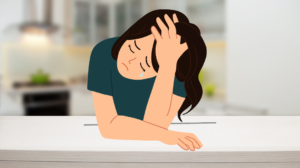I agree. It is “obvious much.” Quarantines have historically been implemented to prevent outbreaks of disease. The word quarantine comes from “quarantena” meaning 40 days and first used in the Venetian language in the 14th and 15th centuries. During the middle ages, ships sat at anchor for 40 days before coming ashore to reduce the Black Death’s spread. Of course, 40 days pales in comparison to the 365+ days that have passed. Many of us have had to adjust to home workplaces, online education, and the unrelenting uncertainty of “what now?”
One alarming concern is the quarantine’s toll on mental health and our precarious health care system’s ability to meet those pressing needs. The COVID-19 pandemic comes at an unprecedented time in human history when we are already struggling to curb an epidemic of loneliness and the rising prevalence of mental health disorders in our communities. It should be no surprise to anyone that we are struggling with “stay at home” directives.
Among the most hard-hit are young adults ages 18-35, particularly those who have pre-existing mental health conditions. A survey published December 2020 by the Canadian Mental Health Association and the University of British Columbia found concerning implications for Canadians’ mental health. The survey, which has over 3000 participants, suggests that 40% of Canadians state that their mental health has worsened during the second wave of the pandemic compared to March 2020. This deterioration has been particularly seen in younger people ages 18-24 (60%), unemployed individuals (61%), those with a pre-existing mental health issue (61%), those identify as LGBTQ2+ (54%), and those with a disability (50%). Most concerning is an increase in suicidal thoughts. The survey found that 21% of Canadians aged 25-34 and 19% of those aged 18-24 experienced recent thoughts or feelings of suicide.
Why do we see this deterioration, especially in young adults ages 18-35? We see a relationship between the social stressors that arise during a pandemic and enforced lockdown periods. The uncertainty, unemployment, and social isolation are now taking their toll. The survey also reveals that more individuals have turned to alcohol and cannabis use, which will also contribute to mental health deterioration in the long run. For example, 30% of those with a pre-existing mental health condition have reported increased alcohol use during the pandemic.
What can be done? The unfavourable effects of a period of quarantine on mental health are not surprising. However, a few studies have suggested that we may still experience these effects several months and years afterwards. It is not enough to tell struggling individuals to “just get through it.” Ultimately, the public needs to be aware that existing support services and efforts to mitigate the pandemic’s effects need to continue long after the end of the lockdown.
As an individual who has been in a position to support several relatives, students, and co-workers during the past year, I can fully attest to a genuine need for improved and integrated community intervention. In one instance, a friend’s depression and psoriasis worsened due to recent stress. With encouragement, my friend reached out to mental health services for support and is now coping well. My friend is just one example of the way stress can impact existing mental health conditions which can also impact physical conditions previously well controlled.
Pre-pandemic, the mental health system in Canada struggled with long wait times and poor access. While seemingly hopeless at times, the spotlight of recent events offers a unique opportunity to develop community-level interventions to alleviate the long wait times and the stress on intensive, high-cost services such as hospitals. One such example is Eli’s Place, a long-term, rural residential treatment and mental health recovery-based program for young adults. Eli’s Place will offer individualized therapeutic care with a graduated transition into the community. By changing the landscape of Canada’s mental health system, we can hopefully get people the help they need sooner and prevent any future Canadian from feeling lost at sea without aid.
A year and a few weeks counting, I have missed working in coffee shops, picking out books in a local store (by the way, I recommend The Woo-Woo by Lindsay Wong), and inviting friends over to bake. These may seem very normal, “obvious,” day-to-day things that many individuals might miss, but freedom and socializing can be just as essential for mental well-being as sleep and safety. As we look to the coming months, things are beginning to look up. There is the promise of spring, eventual vaccines, and the potential return to regular school or work for young adults. Hopefully, a year from today, we will look back to this period as a storm we have successfully weathered.
My name is Carmen; nice to meet you! I am currently working in a food allergy lab as a research student at SickKids Hospital. In my spare time, you can catch me trying new recipes or outdoors on a hike. (Editor’s Note: We’re fortunate to have Carmen as a member of our Peer Advisory.)
Eli’s Place will be a farm-based residential treatment centre helping adults aged 18-35 who have been diagnosed with serious mental illness. As we envision Eli’s Place, we anticipate that yoga will play an important role supporting the journey from mental illness to hopeful futures.





